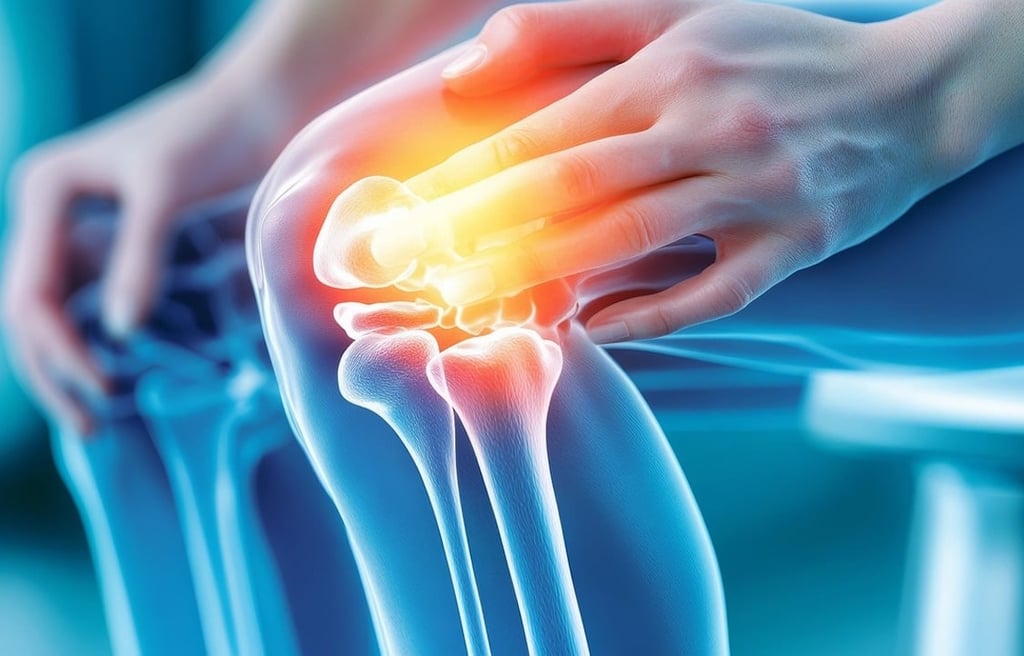RHEUMATOID ARTHRITIS (PART I)
Unlike osteoarthritis, which results from wear and tear of the joints, Rheumatoid Arthritis occurs when the immune system mistakenly attacks the lining of the joints
Rheumatoid arthritis is a chronic autoimmune disorder that primarily affects the joints, but it can also impact other parts of the body.
Rheumatoid Arthritis (Part I)


Unlike osteoarthritis, which results from wear and tear of the joints, Rheumatoid Arthritis occurs when the immune system mistakenly attacks the lining of the joints, causing inflammation, pain and swelling. Over time, this can lead to joint damage, loss of function and a range of complications.
Rheumatoid Arthritis affects approximately 1% of the global population, with women being more likely to develop the condition than men. While it can occur at any age, it commonly starts between the ages of 30 and 60. Early diagnosis and treatment are critical to managing symptoms and preventing long-term damage.
Causes of Rheumatoid Arthritis
The exact cause of rheumatoid arthritis is unknown, but several factors are believed to contribute to its development:
1. Genetics: There is evidence that genetics play a role in the development of Rheumatoid Arthritis. Certain genes, particularly those related to the immune system, may increase the likelihood of developing the condition. However, having these genes does not guarantee that someone will develop Rheumatoid Arthritis.
2. Environmental Triggers: Environmental factors, such as infections, stress and exposure to certain chemicals, may trigger the onset of Rheumatoid Arthritis in people with a genetic predisposition. Smoking, in particular, is a known risk factor, as it can increase the severity of the disease.
3. Hormonal Factors: Women are more likely to develop Rheumatoid Arthritis, suggesting that hormones may play a role. Some studies have found that changes in hormone levels, such as those during pregnancy or menopause, may influence the onset or progression of Rheumatoid Arthritis.
4. Immune System Dysfunction: In Rheumatoid Arthritis, the immune system attacks the synovium, the lining of the membranes that surround the joints. This results in inflammation and thickening of the synovium, eventually leading to the destruction of cartilage and bone within the joint.
Symptoms of Rheumatoid Arthritis
Rheumatoid Arthritis typically affects the small joints in the hands and feet, but it can also affect larger joints like the knees, hips and shoulders. Symptoms often develop gradually and can vary in severity. Common symptoms include:
1. Joint Pain and Stiffness: Joint pain is a hallmark of Rheumatoid Arthritis. The pain is often described as aching or throbbing and may be worse in the morning or after periods of inactivity. Joint stiffness, particularly in the morning, can last for more than an hour and may be accompanied by swelling and warmth in the affected joints.
2. Fatigue and Malaise: Many people with Rheumatoid Arthritis experience chronic fatigue, a general feeling of being unwell, and having low energy. This can significantly impact daily life and contribute to feelings of frustration or depression.
3. Symmetrical Joint Involvement: Rheumatoid Arthritis typically affects joints on both sides of the body in a symmetrical pattern. For example, if one hand is affected, the other hand is likely to be affected as well.
4. Joint Deformity: In severe cases, prolonged inflammation can cause joint deformity, where the joints become visibly misshapen. This is most commonly seen in the hands and feet and can lead to significant disability.
5. Systemic (whole body) Symptoms: Rheumatoid Arthritis is not confined to the joints. In some cases, it can affect other organs such as the lungs, heart and eyes. This can result in complications like lung disease, cardiovascular issues and dry eye syndrome (Sjogren's syndrome).
Diagnosis of Rheumatoid Arthritis
Early diagnosis of Rheumatoid Arthritis is crucial for preventing joint damage and managing the disease effectively. A diagnosis is typically made based on a combination of clinical symptoms, medical history, and diagnostic tests. These tests may include:
1. Blood Tests: Common blood tests for Rheumatoid Arthritis include the rheumatoid factor (RF) test and anti-cyclic citrullinated peptide (anti-CCP) antibody test. Elevated levels of these antibodies are often found in people with Rheumatoid Arthritis. Additionally, markers of inflammation such as erythrocyte sedimentation rate (ESR) and C-reactive protein (CRP) can indicate the presence of inflammation.
2. Imaging Tests: X-rays, ultrasound or MRI scans may be used to assess the extent of joint damage and monitor disease progression. These imaging tests can reveal early signs of joint erosion and cartilage damage that may not be visible during a physical examination.
3. Physical Examination: A healthcare provider will perform a thorough physical examination, checking for signs of joint tenderness, swelling, warmth and reduced range of motion.
We will continue with the treatment and management of Rheumatoid Arthritis in our next blog post.
SUBSCRIBE
Subscribe for updates on latest posts and to follow what is happening in the home of Target Pain.


